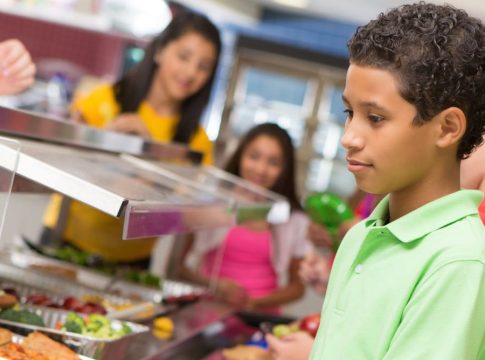Fresh Food Follies: The Impact of Funding Cuts on School Meals and Local Agriculture
The delicious crunch of fresh veggies and the sweetness of ripe fruits each afternoon in school cafeterias are at risk. In a surprising twist of fate, the U.S. government has slashed over $1 billion from two pivotal programs that brought a bounty of fresh food to children’s plates, leaving many families and local farmers in a tough spot.
What’s Cooking?
Two cherished programs have been tossed off the menu:
- Local Food for Schools: A $660 million initiative that allowed schools to scoop up local produce and fresh ingredients to nourish the kids who rely on school meals daily.
- Local Food Purchase Assistance: A $500 million pot to help food banks connect with local farmers, ensuring that communities can savor the very best of local harvests.
These programs weren’t just about nutrition; they were about teaching young palates to appreciate homegrown flavors.
A Recipe for Disappointment
Imagine the usual school day. About 28 million children await their lunch, perhaps a colorful salad or a hearty veggie stir-fry made from fresh farm-to-table ingredients. Now, without the funding, school cafeterias may be left with a daunting question: What’s next? Less access to fresh, local produce means students miss out on vital lessons about nutrition—and let’s face it, who wouldn’t want to shoot for a rainbow on their plate?
Dr. Marlene Schwartz, a powerhouse in food policy, points out that these cuts could deprive local farmers of guaranteed buyers. For farmers and ranchers, knowing that schools would buy their harvest was more than comforting; it was essential.
The Nutritional Knock-on Effect
School meals have long had to meet dietary standards set by the National School Lunch Program and the School Breakfast Program. These meals traditionally pack more punch—nutritionally speaking—than what you might find at your neighborhood diner.
But with budgets tightening, that could change. The quality of food served in schools is crucial for combating unhealthy eating habits that plague many American kids. With sugary snacks and fast food vying for attention, maximizing nutrition in school meals is like adding a splash of lemon to your favorite dish—it’s invigorating!
Food Banks: A Yummy Dilemma
Food banks serve as lifelines for 50 million Americans, but let’s be real—rushing in for a bag of chips isn’t equal to a wholesome meal. Families relying on food banks often lap up more processed foods, putting their health at risk. Thankfully, many food banks have been stepping up their game to provide healthier options, but without adequate funding, they may find themselves backtracking.
Tantalize Your Taste Buds
So, what now? Readers can advocate for these programs by supporting local farmers and urging policymakers to reinstate the funding that was sliced away. Every time you buy a fresh carrot or plump tomato from a local farmer’s market, you’re not just flavoring your meals—you’re also supporting local agriculture and enriching the futures of children who deserve better.
The Bottom Line
In a world where delicious fresh food should reign over cheaper, processed alternatives, we can’t afford to sit idly by. The health of our children—and our farmers—depends on it. Let’s rally for a farm-to-table revolution that sweeps through our schools and communities alike! 🍅🥦

Covers wellness, nutrition, mental health, and daily life tips.
Bio: Talia brings a background in health journalism and holistic living to help readers live better, one tip at a time.

